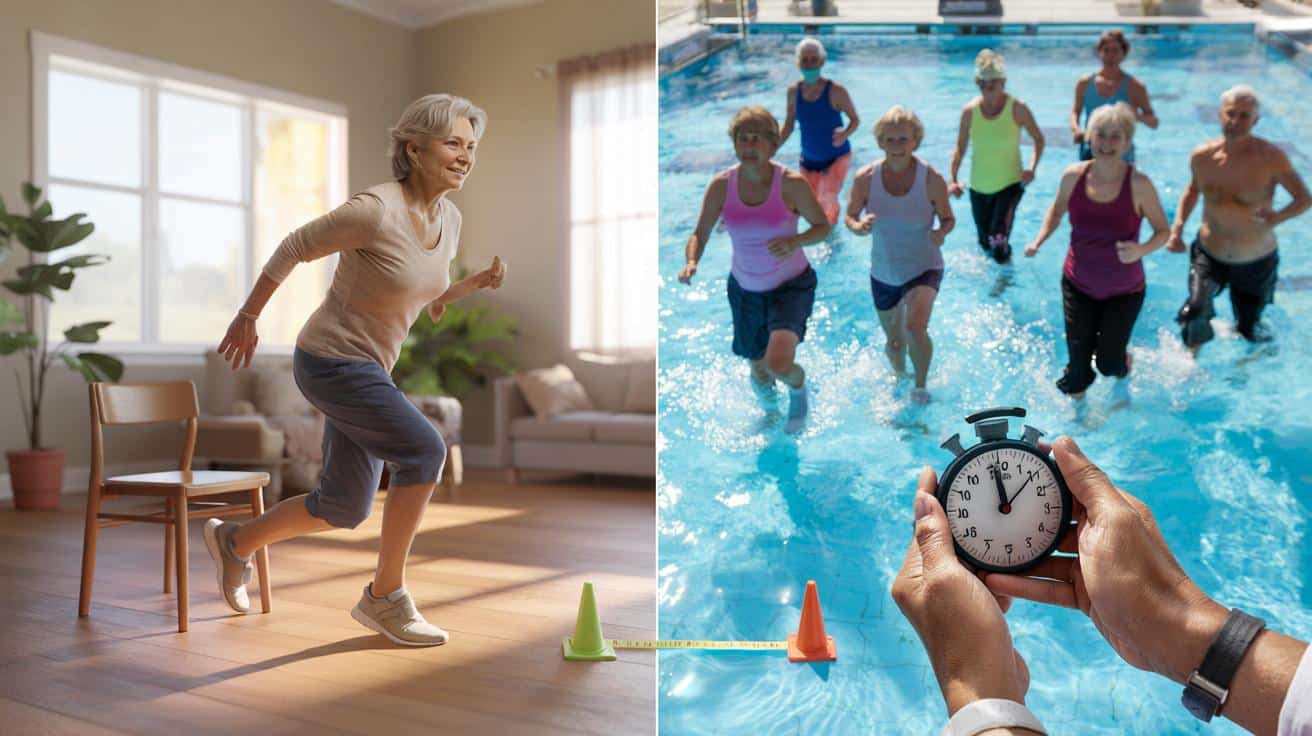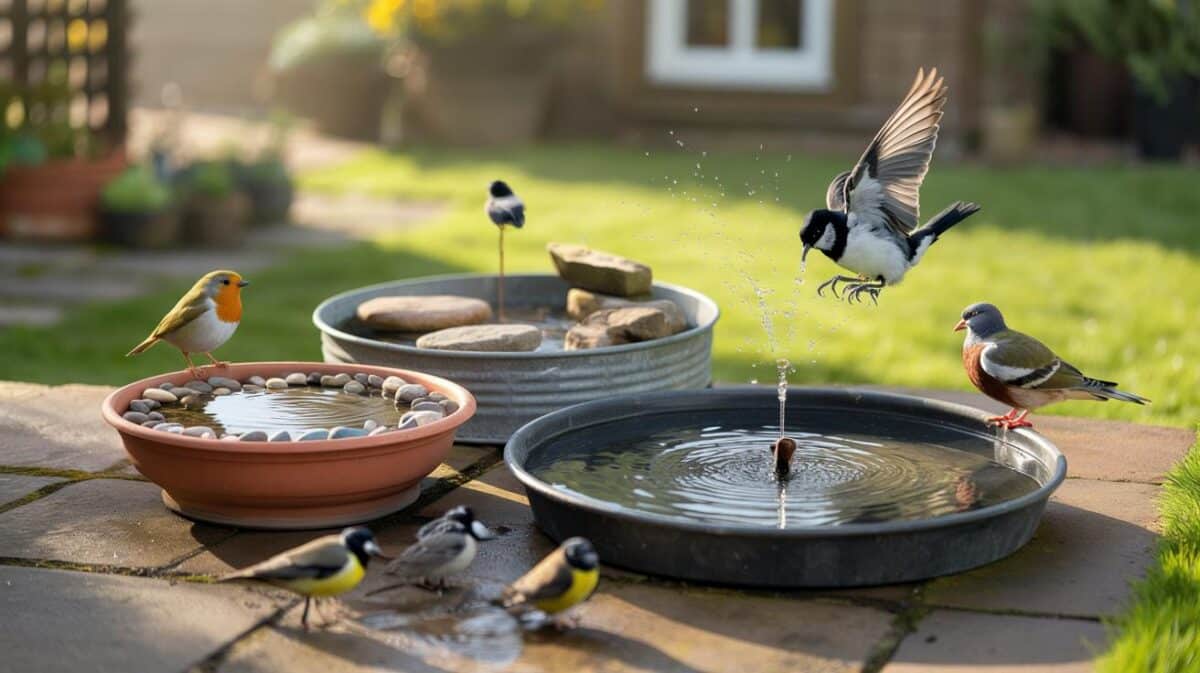Researchers in Portugal compared popular workouts over 24 weeks, tracking strength, mobility and speed. Two options stood out for daily life.
What the team tested
A university team in Évora enrolled 153 adults aged 55 to 80. They split volunteers into four groups: sensorimotor training, aquatic aerobics, Pilates and a non-exercising control group. Sessions ran for 24 weeks. The scientists measured strength, flexibility, balance and the Timed Up and Go (TUG) speed test.
Two programmes outperformed the rest. Sensorimotor drills improved balance, coordination and whole‑body strength. Aquatic aerobics built lower‑body strength, mobility and flexibility. Pilates and the control group did not record meaningful gains on the measures used.
Across 24 weeks, sensorimotor training and aquatic aerobics delivered the clearest boosts to balance, strength and mobility in adults aged 55–80.
Sensorimotor training explained
Sensorimotor work blends what you feel with how you move. It trains the nervous system and muscles to talk to each other faster and more accurately. Coaches use it to tackle stubborn aches, sharpen posture and steady wobbly ankles or knees. This kind of training fine‑tunes proprioception, which is your body’s sense of position in space.
That makes it ideal when everyday tasks start to feel risky. Stepping off a kerb, reaching into a high cupboard or turning quickly on a busy pavement all demand split‑second coordination. The study suggests sensorimotor practice sharpens those skills and builds strength at the same time.
Try these simple drills at home
- Line walk: place one foot directly in front of the other, heel to toe, and take 20 slow, controlled steps along an imaginary line.
- Single‑leg stand: stand tall, lift one knee to hip height and hold for 10–15 seconds, then switch sides. Repeat three times per leg.
- Eyes‑closed balance: hold a gentle single‑leg stance with eyes closed for up to 10 seconds, using a wall or chair for fingertip support if needed.
- Foot roll: standing or seated, roll a soft ball under one foot for 20–30 seconds to wake up the small stabilising muscles.
Keep the room clear. Stand near a counter or sturdy chair. Aim for slow, smooth movements and steady breathing.
Aqua aerobics and why the pool helps
Water supports your weight, which reduces joint strain. It also pushes back against every movement, so you strengthen muscles without hard impacts. The study linked pool sessions with better lower‑body power, improved range of motion and smoother walking speed.
Classes often include marching, side steps, knee lifts and gentle lunges, all under water. Many people find the group setting sociable and uplifting. That social lift can help you stick with sessions long enough to gain results.
The water cushions painful joints yet adds resistance to every move. That combination helps you get stronger without punishing your knees or hips.
How the options compared
| Group | Main gains reported | Best suited for |
|---|---|---|
| Sensorimotor training | Balance, coordination, overall strength | People wanting better stability and everyday confidence |
| Aquatic aerobics | Lower‑body strength, mobility, flexibility | Anyone with sore joints, arthritis or balance concerns |
| Pilates | No significant change in this trial’s tests | Core control and posture work outside the study’s focus |
| Control | No significant change | Not recommended when independence is the goal |
What the timed up and go test tells you
The TUG test checks how quickly you can stand up, walk three metres, turn, walk back and sit down. Use a firm chair and a tape measure. Time your effort from the first movement to sitting down again. A result under 12 seconds points to a lower risk of falls for most older adults. Repeat the test each month to track changes.
A chair, three metres of clear space and a stopwatch give you a useful mobility check in under 12 seconds.
Why this matters for everyday life
Around one in three adults over 60 experiences a fall each year. Falls can lead to fractures, hospital stays and long recovery. Balance training and leg strength reduce that risk. The trial’s winners target those exact qualities. Small, regular sessions can protect independence and confidence.
Limits you should know about
The Pilates arm of the study had only 22 participants. Most volunteers were women. Researchers did not adjust for starting fitness, diet or medication. Those gaps do not erase the findings, but they call for larger trials. Pilates can still help posture and core control, even if it did not beat the other options on these specific measures.
How to get started this week
- Book two 45‑minute pool classes or plan two home balance sessions.
- Add one short strength routine using bodyweight or light dumbbells.
- Test your TUG time today, then again after four weeks.
- Keep a simple log of minutes, exercises and how steady you feel.
A four‑week starter plan
- Week 1: 2 pool sessions or 3 × 10‑minute balance drills at home; TUG test once.
- Week 2: Add sit‑to‑stand sets (3 × 8) and supported heel raises (3 × 10).
- Week 3: Extend single‑leg holds to 20 seconds; add gentle side steps with a band.
- Week 4: Introduce eyes‑closed balance for 5–10 seconds; repeat the TUG test.
Safety, kit and small wins
Wear supportive shoes and clear the floor of hazards. Use a countertop for light support during single‑leg work. In the pool, stay where you can stand comfortably. A soft ball, a mini‑band and a kitchen timer cover most needs. Progress by adding seconds or smooth reps, not by chasing fatigue.
How this fits national guidance
UK advice for adults suggests at least 150 minutes of moderate activity a week, or 75 minutes if you work harder. Strength training twice weekly and balance work on at least two days help reduce fall risk as you age. Sensorimotor drills tick the balance box. Aquatic aerobics contributes to both aerobic minutes and leg strength.
Extra ideas to build resilience
Pair balance practice with leg‑dominant strength moves such as sit‑to‑stand, step‑ups and loaded carries. These moves prepare you for stairs, shopping bags and uneven pavements. If you live with back pain, begin with short bouts and neutral‑spine positions. If you take medications that affect dizziness, schedule sessions when you feel most alert and hydrated.
You do not need expensive gear or long workouts. Ten focused minutes, most days, can make walking, turning and standing safer.
What to do next
Pick one path to begin: sensorimotor at home or a pool class nearby. Test your TUG time. Set a four‑week goal. If you want more structure, ask a physiotherapist or a qualified trainer to personalise progressions and adjust for any conditions you manage. Small, consistent steps can shift the dial on balance, strength and confidence after 55.








Interesting, but if Pilates had only 22 people, isn’t that too small to call it “no change”? Did you contol for at‑home strength work or walking outside the sessions?